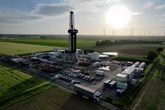Nickel Market In Transition
Published by Jess Watts,
Editorial Assistant
Global Mining Review,
Several intertwined factors affected the global nickel market in 2024. These included shifting supply dynamics, fluctuating demand, and growing environmental concerns. After a dramatic 47% price collapse in 2023, largely due to oversupply from Indonesia, the market struggled to balance production with demand.1 Prices continued to fall in 2024, save for a brief surge following US sanctions on Russian nickel, although this rally was short-lived. By year-end, persistent oversupply pressures drove down prices to a four-year low of US$15 540/t, signalling that the market remained challenged by global production shifts and fluctuating demand.
At the same time, the environmental impact of traditional nickel mining, smelting, and refining operations has prompted more discussions on the potential for a ‘green nickel’ premium, which may reshape the market. These conversations developed alongside the exploration of alternative materials for electric vehicle (EV) batteries, aiming to reduce reliance on nickel while aligning with climate and environmental goals.
Global supply and demand: Persistent oversupply and market shifts
Global demand in terms of primary nickel consumption rose from 3.19 million t in 2023 to approximately 3.35 million t, an increase of 5% according to forecasts from the International Nickel Study Group (INSG).3 Looking ahead, the demand for nickel is likely to increase further, to around 3.55 million t in 2025.
A sharp rise in global nickel production counterbalanced this growth in demand, creating a surplus of 170 000 t – up slightly from 167 000 t in 2023. According to Ewa Manthey, commodities strategist at ING, this oversupply has exposed nickel to violent price spikes in the event that investors unwind their short positions.
Indonesia, which continued to dominate global nickel production – accounting for an estimated 57% of total output – was a major player in the oversupply. The scenario led to European stainless-steel makers turning to Indonesia for nickel pig iron (NPI). European mills have typically used ferronickel, a higher-purity alloy, but several plants that make it have shut down due to low-price competition from Indonesia, making production unprofitable. This is a significant change from 2023, as Indonesian government data shows that exports of NPI to Europe surged to 87 485 t this year from just 1006 t.
The oversupply of Indonesian NPI also coincided with the closure of several major nickel mines elsewhere. Mines operated by BHP and First Quantum Minerals in Australia, along with Glencore’s Koniambo mine in New Caledonia, ceased production.
Nickel refining demonstrated a similar shutdown trend. For example, in June 2024, BASF and Eramet abandoned plans to invest up to US$2.6 billion in a nickel refinery originally intended to support growing demand for battery-grade nickel.10 This project would have been the only 100% Western-backed nickel project in Indonesia. Its abandonment was largely driven by changing market dynamics, which made the project less viable amid an oversupplied nickel market.
This is a preview of an article that was originally published in the March 2025 issue of Global Mining Review.
Subscribe to Global Mining Review for free to read this article in full and many more here.
Read the article online at: https://www.globalminingreview.com/mining/02042025/nickel-market-in-transition/
You might also like
ABB to power Vulcan Energy’s renewable lithium project
ABB has been selected by Vulcan Energy to deliver the complete electrical infrastructure for its Phase One Lionheart Project in the Upper Rhine Valley, Germany.


